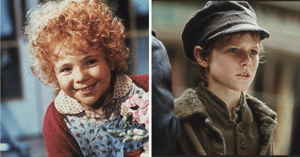In 1998, a consortium of child welfare agencies in Missouri were researching the market for web based, social services case management software. When their search turned up empty...they hired a firm to create it for them. A few months later in the spring of 1998, FAMCare was born.
Social Services Software for Child and Family Welfare Agencies
Topics: FAMCare, social services software, Family and Child Welfare
Foster Care to Adoption
Of the 428,000 children in foster care in the U.S., over 30% cannot be returned to their families and are waiting to be adopted. 135,000 children are adopted each year and there are currently 1.5 million adopted children in the United States. 59% are from the child welfare (or foster) system. Children enter foster care through no fault of their own because they have been abused, neglected or abandoned. These children are in the temporary custody of the state while their birth parents are given the opportunity to complete services that will allow the children to be returned to them if it is in the children’s best interest. Unfortunately, 30% of them never make it.
Topics: Foster Care, Adoption, social workers, what social workers do, Family and Child Welfare
We are taught as children that we can trust our parents, our teachers, our religious leaders, the police, the mayor, and the President of the United States. It is their duty to care for us, to mean us well, and to do only good. We can trust them; until we can’t.
Topics: Veterans Issues, caseworkers, human services, Family and Child Welfare, Victim Services
Since 1977 when Annie opened on Broadway, theatrical artists have been portraying endangered youth who have experienced both maltreatment and engaged in delinquent behavior like Oliver Twist and Little Orphan Annie.
Oliver! and Annie, two of Broadway’s most iconic musicals, star two children caught between Juvenile Justice and Child Protective Services.
Topics: Child Welfare, Juvenile Justice, Family and Child Welfare
Present Appearances
With the onset of the corona virus pandemic and the issuance of “stay at home” orders closing schools and businesses in many local communities, child abuse reports have plummeted across the country. The agencies, which provide support for families and children as abuse cases move through the justice system, reported serving 40,000 fewer children nationwide between January and June of this year than the same period last year, from 192,367 children in 2019 down to 152,016 this year, a 21% drop, according to the National Children’s Alliance, an accrediting body for a network of 900 children’s advocacy centers. Reports of abuse have declined dramatically, they say, not because it isn’t happening, but because with everyone “sheltering in place”, teachers, doctors and others have fewer ways of catching it.
“An 18-year-old sleeps in a doorway of a public building with nothing but a tattered blanket to shield him from the cold wind. He took little more than the clothes on his back when his foster parents demanded that he leave home. He hasn’t been in touch with his biological parents in years. None of his friends’ parents will allow him to spend a night on their sofa. And he’s unfamiliar with the nearest homeless shelter.” (Social Work Today, Vol. 19, P.24, Nadine Hasenecz, MSW, LSW)
Topics: Foster Care, social justice, Family and Child Welfare







